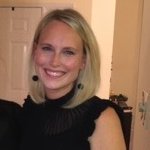On Monday, the governors of California and New York each signed legislation that will gradually boost the minimum wage in those states to $15 an hour – the highest in the nation – by the end of 2022.
The federal minimum wage for nonexempt employees is currently $7.25 an hour, but many states have their own minimum wage laws. Democratic presidential primary candidates Hillary Clinton and Bernie Sanders have both focused on wage disparity and the struggles of lower-income Americans as key campaign issues. While Republican candidates largely have focused on increasing job opportunities for blue-collar Americans and bringing back overseas manufacturing jobs — rather than minimum wage increases. The candidates tend to oppose federal and state minimum wage increases.
While California and New York’s moves are some of the most progressive yet to close the increasing gap between the rich and the poor, experts say more states may follow.
Connect your local minimum wage story to bigger national trends and data
Both the U.S. Bureau of Labor Statistics and advocacy groups, including Raise the Minimum Wage, offer handy data to put your state’s minimum wage in context. Currently 29 states, including the District of Columbia, have set their minimum wage above the federal minimum level of $7.25 an hour as of Jan. 1, 2015.
Fifteen states, and the District of Columbia, index their minimum wages to rise automatically with the cost of living. Eight states have set the tipped minimum wage equal to the value of the full minimum wage—which helps ensure employers directly pay tipped workers the full minimum wage.
The advocacy group Raise the Minimum Wage also has this useful chart of state-by-state current and projected minimum wages.
Seek industry experts and leaders to comment on national minimum wage trends
When minimum wage increases are on the table at the state and federal level, most business advocacy groups tend to vehemently oppose the hikes. But Lydia DePillis of The Washington Post took advantage of internal research conducted by a leading consultant for state chambers of commerce to dig into business leaders’ true opinions on the issue.
A survey of 1,000 business executives across the nation found 80 percent of survey respondents said they supported raising their state’s minimum wage, while only 8 percent opposed it. LuntzGlobal, a firm run by Republican polling expert Frank Luntz, conducted the survey which the liberal watchdog group Center for Media and Democracy also obtained.
The Washington Post story raises a valid question: if so many executives support the hikes, why do state chambers of commerce oppose the wage increases?
Experts told the Washington Post that modest minimum wage hikes don’t impact most chamber members, so they leave the issue to trade groups for retailers, hotels, restaurants and other industries which employ most low-income workers. And the minimum wage increases would heavily impact those industries.
National industry experts can add depth and credibility to your reporting. Some questions to consider:
What do minimum wage increases do to professions that employ low-income earners who work just above the minimum wage — such as entry-level journalists, kindergarten teachers and social workers?
How do minimum wage hikes tend to impact small businesses and startups?
Get credible economists to weigh in
The rhetoric on both sides with highly charged political issues like minimum wage increases becomes confusing. But economists study these issues over long periods of time — largely leaving out partisan rhetoric. What do economists say on the issue?
The issue is tricky, Jeff Clemens, an assistant professor of economics at the University of California, San Diego and a faculty research fellow at the National Bureau of Economic Research, told USA Today.
Clemens’ research showed that low-skilled workers in states with the greatest minimum wage increases during and after the Great Recession saw the biggest declines in their overall employment rates.
He told USA Today he feels most persuaded by recent research suggesting stagnant wage growth is primarily driven by increased competition associated with trade with China and other economic powerhouses and technology replacing some forms of labor. Wage hikes largely won’t fix those problems, he said.
Earned income tax credits and job skills training programs are better fixes.










